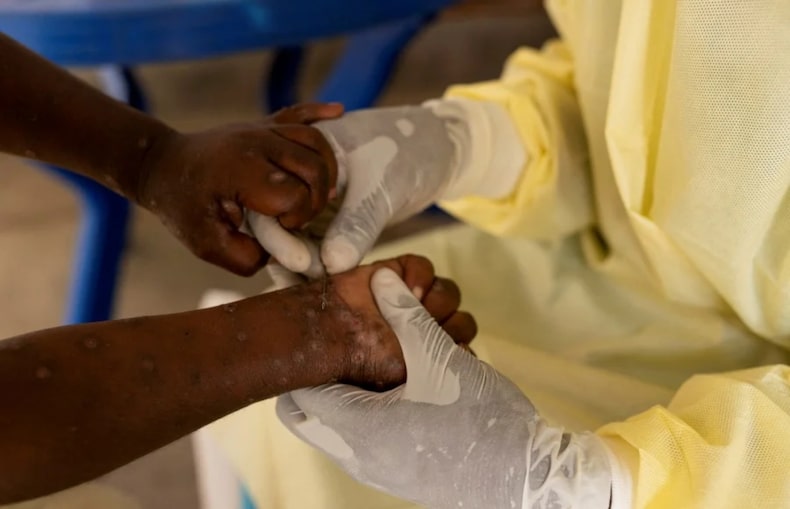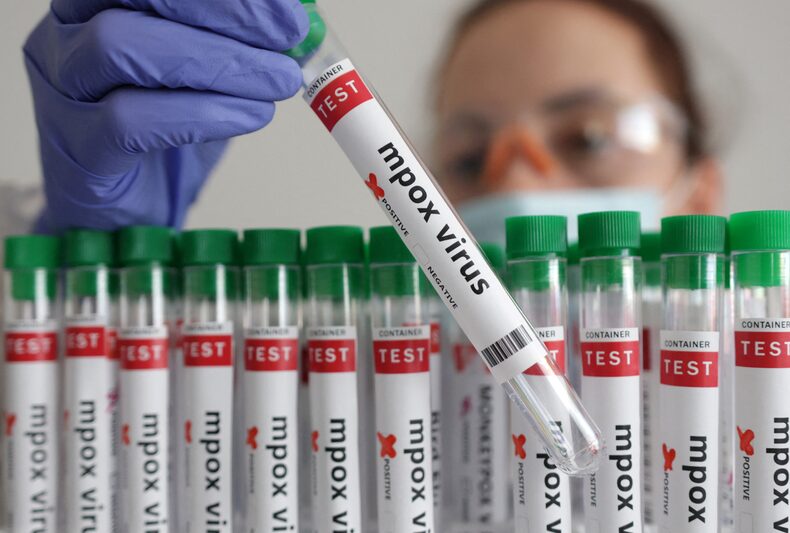For the second time in two years, WHO has designated the zoonotic disease as a global public health emergency. These are the most common symptoms and modes of transmission.
As a public health emergency of international concern. This was recently declared by the World Health Organization (WHO) to mpox .
It is a highly contagious disease formerly known as monkey pox and that it was renamed in order to avoid false associations or stigmas.
This is also the second time in two years that the organization has decided to activate the highest alert level indicated in the International Health Regulations, in the presence of this condition.
The WHO decision is made on the basis of a home originating from the Democratic Republic of Congo where a new strain has been presented that is apparently more deadly and spreads more quickly.
Although the vast majority of infections are currently concentrated in this country, they have also spread in recent months to other parts of Africa such as Burundi, Nigeria and Cameroon. So far, in 2024 alone, nearly 20,000 cases and more than 500 deaths have been recorded. on the continent because of the disease.
WHO Director-General Tedros Adhanom Ghebreyesus said the picture in the Democratic Republic of Congo is “very worrying” and that “a coordinated international response is needed to end these epidemics” and thus prevent the number of deaths from increasing.
While the president of the WHO Emergency Committee, Dimie Ogoina, assured that the worsening of the epidemic “constitutes an emergency not only for Africa, but for the planet”.
According to Ogoina, in the past, mpox “has not received the attention it deserved in Africa,” where the first human case was recorded. “This then caused a global epidemic in 2022. It is time to act decisively to prevent history from repeating itself.” he added.
The measurement of “public health emergency of international concern” It does not establish that countries have obligations, but rather seeks to promote coordinated actions between different states to deal with the disease.

What is mpox
Formerly known as monkeypox or earthquake pox, MPOX is an infectious disease caused by the MPOX virus. It is considered a zoonosis, meaning it can be transmitted from animals to humans. Although it is in the same group as smallpox, it is considered to be less harmful.
According to the Centers for Disease Control and Prevention (CDC) The disease was first discovered in 1958, after two outbreaks of a smallpox-like disease occurred in colonies of monkeys raised for research purposes.
Although historically it was called “monkeypox”, the exact origin of the disease is still unknown to science.
In the 1970s, the first human case was detected in the Democratic Republic of Congo. Cases have since emerged in Central and West Africa.
But in 2022, everything changed. That year, the largest outbreak of mpox in history was recorded, leaving around 100,000 cases of infection and more than 200 deaths in regions outside the African continent.
What are the symptoms of mpox?
This zoonotic disease manifests itself with different symptoms depending on each case.
One of the clearest signs is that patients present skin rashes on the hands, feet, face, mouth, chest, or near the genitals, the CDC says. The lesions are usually itchy and painful, although they later scab over and fall off.
Other recurring signs of the disease are fever, chills, headache, muscle aches, fatigue, swollen lymph nodes and respiratory symptoms such as a cough, stuffy nose or sore throat.
Patients who have been exposed to the virus that causes MPOX may not show obvious symptoms immediately. This is because the incubation period can last from 3 to 17 days and it is only after this that signs will appear.

How does it spread?
The disease is transmitted by any type of contact with an infected person.
This means that the virus can enter the body if you have been exposed to a rash or scabs caused by mpox. Also through the prolonged face-to-face interactions (such as talking), upper respiratory secretions and bodily fluids, including sexual contact.
In fact, health officials have indicated that the majority of cases in the 2022 outbreak were due to sexual contact.
According to the CDC, pregnant Those who have been infected with the disease could also transmit the virus to their fetus, as well as to the newborn during or after delivery.
touch objects Another form of contagion is that they are contaminated. These include clothing, towels, bedding and sex toys.
Similarly, the animals They are able to transmit the virus. This can occur through contact with infected animals, their fluids, their waste, and through scratches or bites from them. Hunting, capturing, or transporting wild animals to places where MPOX is endemic is another possible route of infection.
It should be noted that, even if the disease does not manifest itself immediately, infected patients are able to transmit the virus to those around them in the same way. This can occur 1 to 4 days before the onset of symptoms.
Certain groups are also more likely to have their COPD worsen. Pregnant women, newborns, children, immunocompromised people and health workers are among the risk groups.
What is the treatment?
According to health organizations, there is no specific treatment for MPOX.
The above is because the methods to treat the disease vary depending on whether it is a normal case or there is a greater risk of it getting worse. In many cases, infected patients eventually recover within 4 weeks at most, without major complications.
In immunocompromised patients, they may need specific medications to treat the disease.
Source: Latercera
I am Robert Harris and I specialize in news media. My experience has been focused on sports journalism, particularly within the Rugby sector. I have written for various news websites in the past and currently work as an author for Athletistic, covering all things related to Rugby news.


